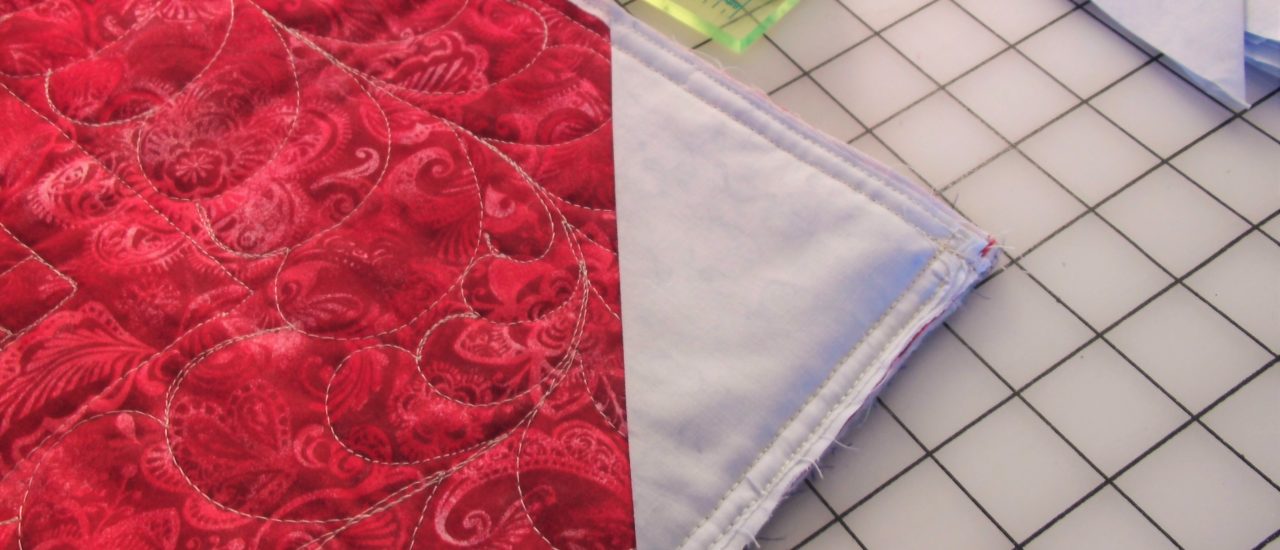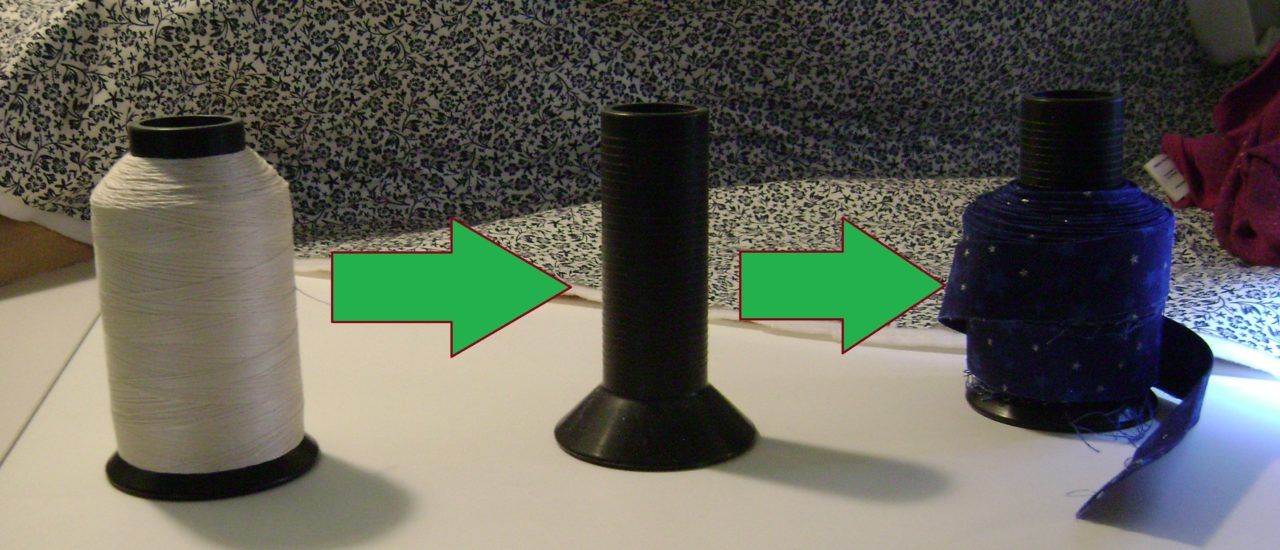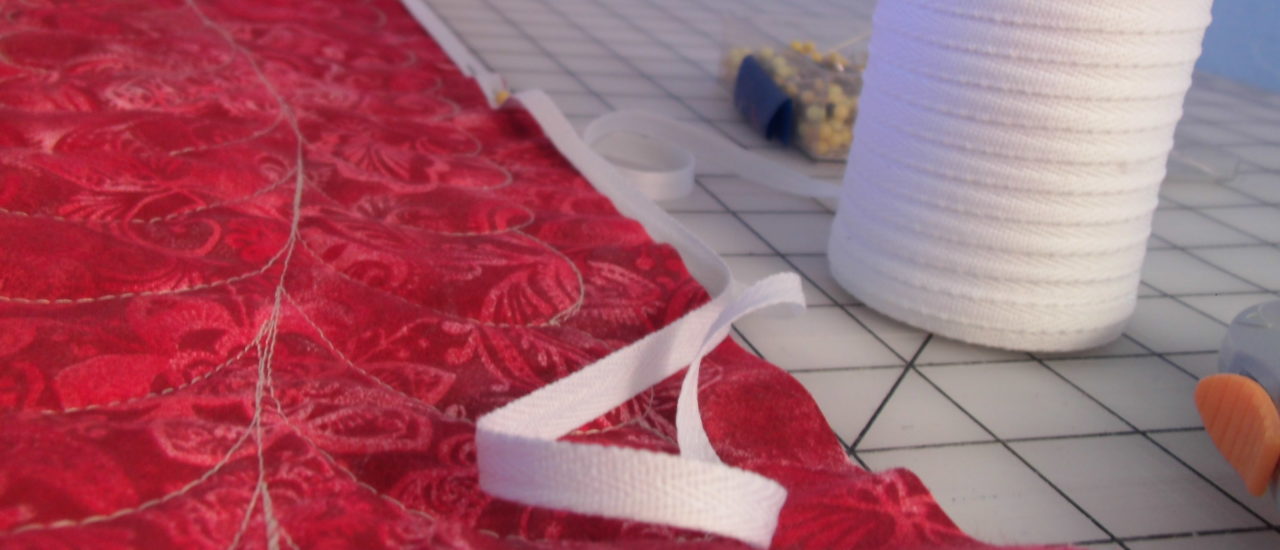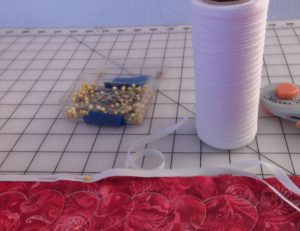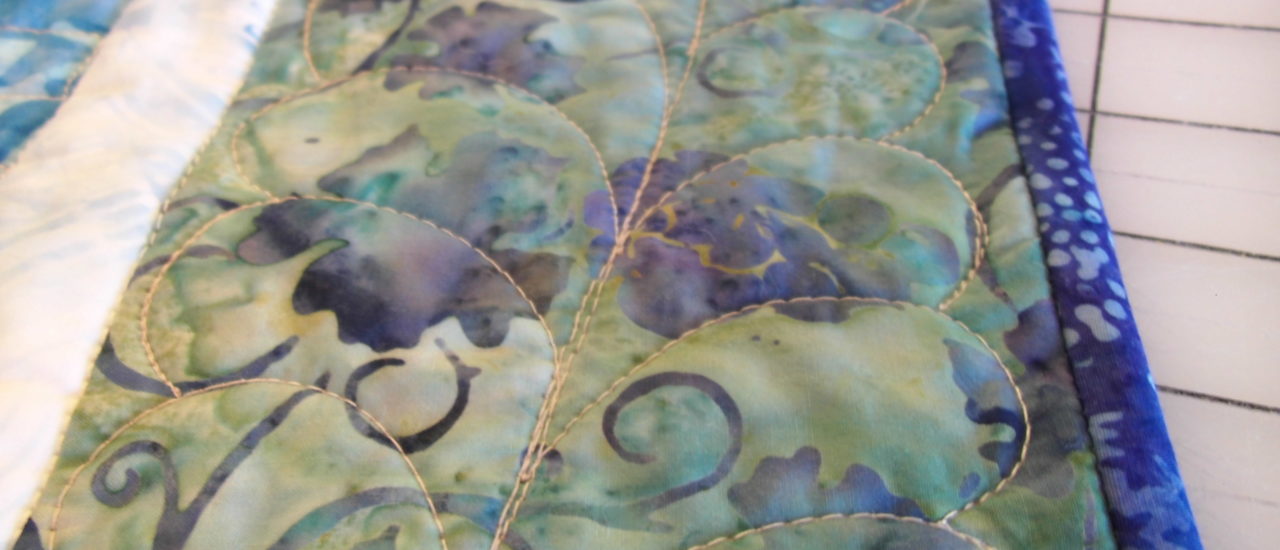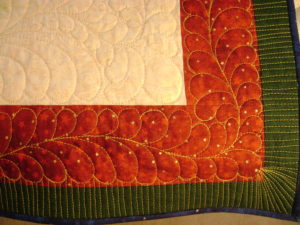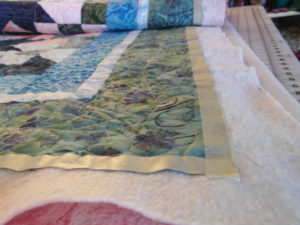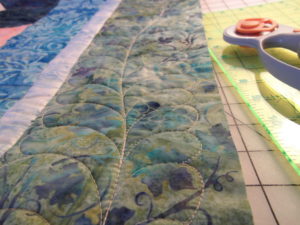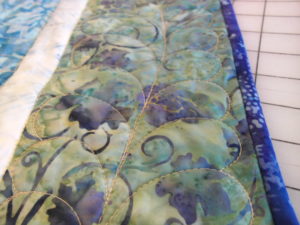You’ve made your quilt top, basted front to back, quilted it down, trimmed it, and now have completed your binding. Great job! But you’re not done yet…
A quilt is not finished until it is labeled and signed!
A super easy way to label your quilts is to put in a corner label.
Cut a 5″ square, fold it into a triangle, then sew it into the corner before you attach your binding. Once the binding is complete (folded over and sewn down), then take a permanent marker and write in the quilt name, your name, date and location. Add any special detail if you feel it is appropriate – “wool batting”, “made for 50th wedding anniversary”, etc.
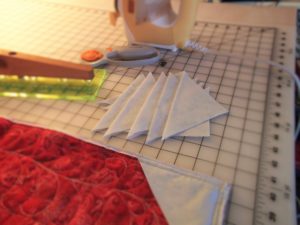
I usually cut a number of 5″ squares and have them ready to go.
NOW you’re finished!
Happy quilting!
